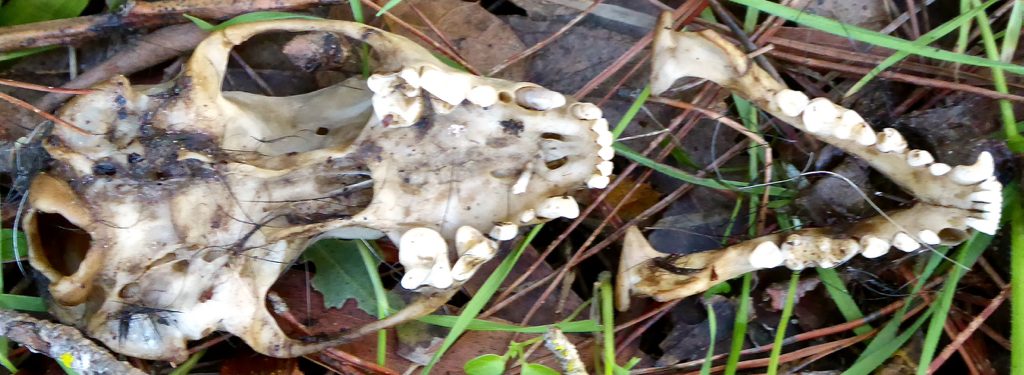A few months ago, I found a dead skunk in a forgotten corner of St. John’s Cemetery; at that time, all that was left was the skin and the skeleton, and of course a faint smell of skunk. The skunk was lying in the midst of a deer trail. I couldn’t figure out how it had died: did a predator such as a raptor or a Bobcat kill it (Carol has seen a small Bobcat near the cemetery)? or did it die in some other manner? Based on what was left of the pelt, I’d say it was a Striped Skunk (Mephitis mephitis), not a Western Spotted Skunk, the only other species that lives in this area.
Since I first saw the body, the decomposers have been at work, and as the skin withered and decayed, the skeleton has slowly been emerging. Some of the smaller bones are now missing — it looked like Mule Deer have stepped on what’s left of the skunk — but the skull is now clearly visible. Using a stick, I positioned the skull and jawbone so I could see the teeth.

The dental formula for both the Striped Skunk and the Spotted Skunk is: Incisors 3 per side upper / 3 per side lower, Canines 1/1, Premolars 3/3, Molars 1/2, for a total of 34 teeth. This individual was missing one lower right incisor, the lower right canine, and one upper right premolar.
We have seen Striped Skunks wandering around the cemetery at night. In fact, skunks are the primary reason to not go into the cemetery at night: it would be far too easy to stumble across one as it came walking around from behind a gravestone, and the consequences of such a meeting could be unpleasant. Most of us would prefer to run into a ghost than a skunk.
